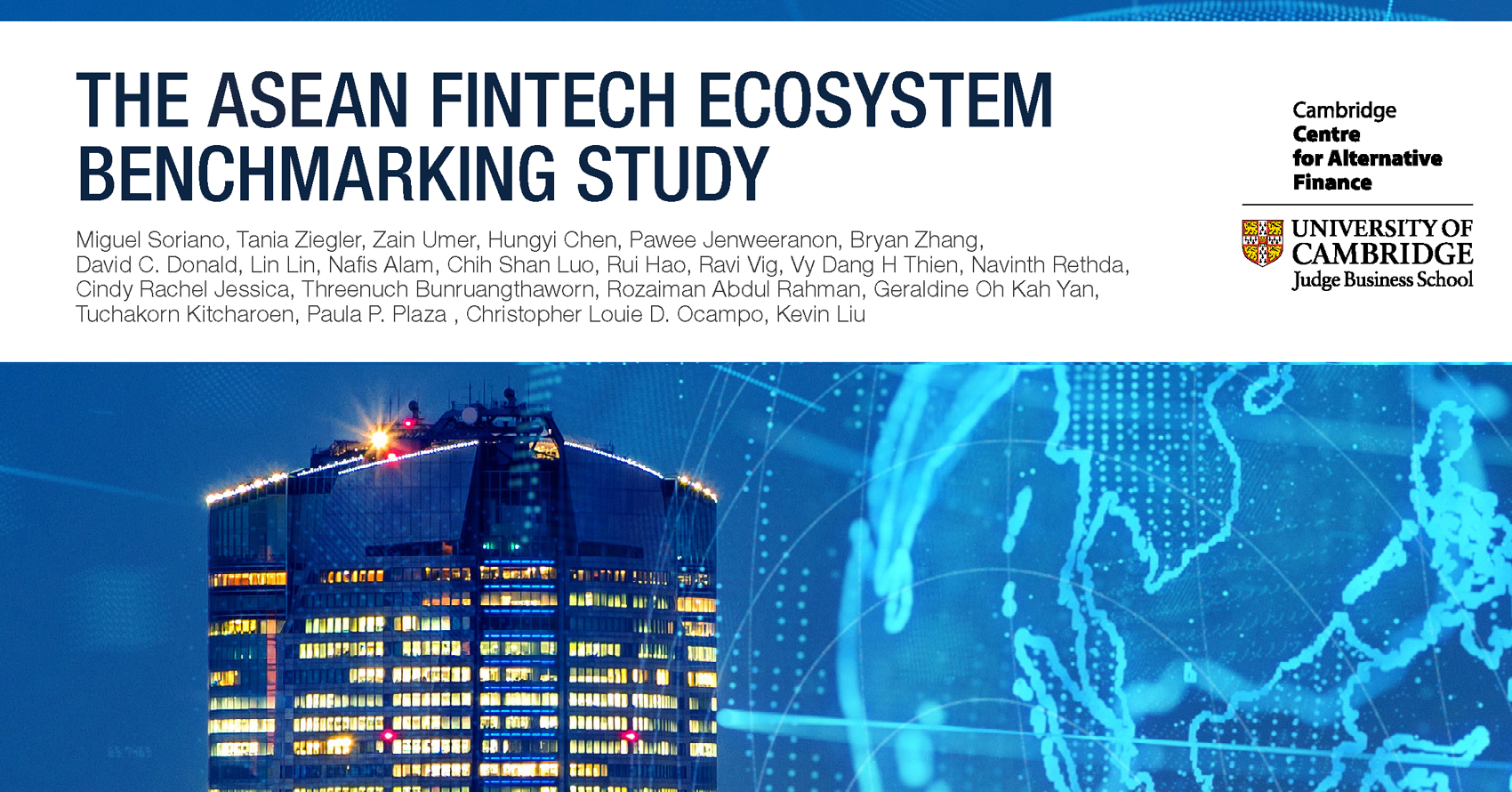This report is jointly produced by the Cambridge Centre for Alternative Finance at Cambridge Judge Business School, the Asian Development Bank Institute (ADBI) and FinTechSpace.
Highlights from the report
- FinTech firms in the ASEAN region are shifting their customer focus from serving individuals to SMEs and large corporations. This is particularly evident in digital lending (56 per cent of their user-base), AI/ML/Big Data (46 per cent) and enterprise technology for financial institutions (80 per cent) business models.
- Predictive Analytics (68 per cent of respondents) and machine learning (40 per cent of respondents) are the most commonly used technologies for all FinTech firms in the region, with Blockchain/DLT gaining momentum in digital payments, enterprise technology for financial institutions and capital raising crowdfunding business models.
- Financial inclusion is a key issue in the region, where many countries have a high percentage of the population without access to financial products and services. Across the complete data-set, 17 per cent of customers served by FinTech firms were categorised as unbanked and 28 per cent were underbanked.
- Most FinTech firms in the region perceive the existing regulations to be adequate and appropriate for their platform activities in their respective jurisdictions.
- Changes in regulation and cyber-security breaches are perceived as the highest risks that FinTech firms may experience in their operations.
- As FinTech firms have started to expand to other countries within the region, more than 80 per cent of survey respondents believe that having an enabling regulatory environment, where the regulators value and use innovative techniques (i.e., regulatory sandboxes) are essential when considering which countries to target.
- Another important factor is having a good digital infrastructure in the country. FinTech firms based in Singapore have been the most active in expanding to other countries, specifically targeting Indonesia and Malaysia.
- Regulators in Southeast Asian countries welcome emerging technologies within financial services. However, there are challenges in balancing market stimulation and risk management through adequate regulation.
- Regulatory sandboxes have become an increasingly popular tool and can be found in six Southeast Asian countries; Brunei, Indonesia, Malaysia, Philippines, Singapore, and Thailand.
- Fifty per cent of the financial authorities in Southeast Asia have developed RegTech initiatives. These are Brunei, Malaysia, Philippines, Singapore, and Thailand.
- The majority of regulators across the region have signed cooperation agreements to share information on FinTech sectors in their respective markets.
- All of the regulators have responded to developments within FinTech markets with some form of bespoke regulation for specific sectors. As an example, 80 per cent have introduced bespoke regulation for digital payments.
- Regulators also continue to use pre-existing regulation for other sectors. As an example, 90 per cent have used existing regulation for the InsurTech industry.
- The regulatory environment in some jurisdictions has not seen as much development within the FinTech sector.
- The over-regulation by authorities may have contributed to preventing growth and development of certain sectors.
- Regulatory harmonisation is significant in terms of FinTech development in the region, and efforts are underway to encourage and further facilitate this, specifically involving cross-border initiatives.

